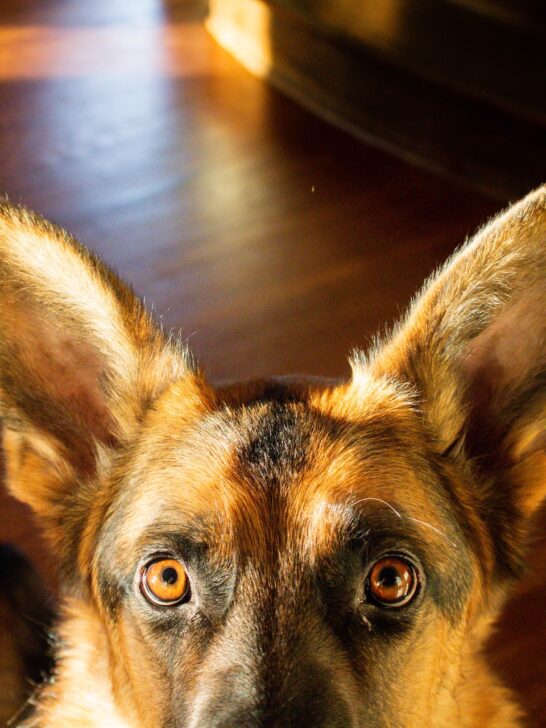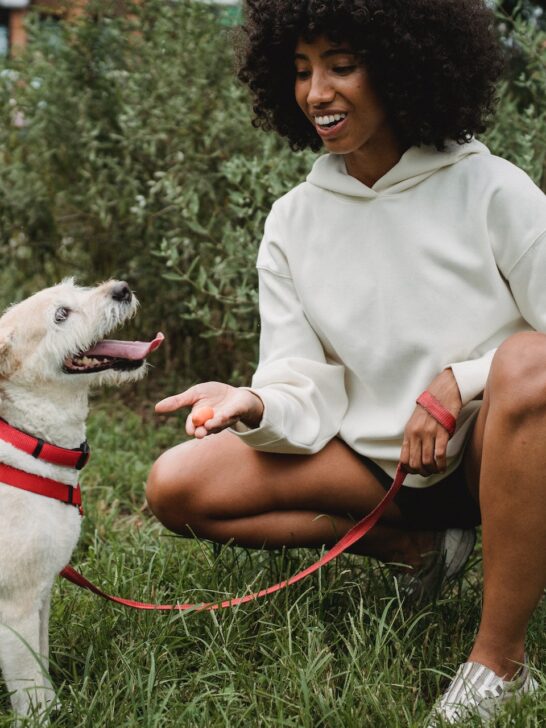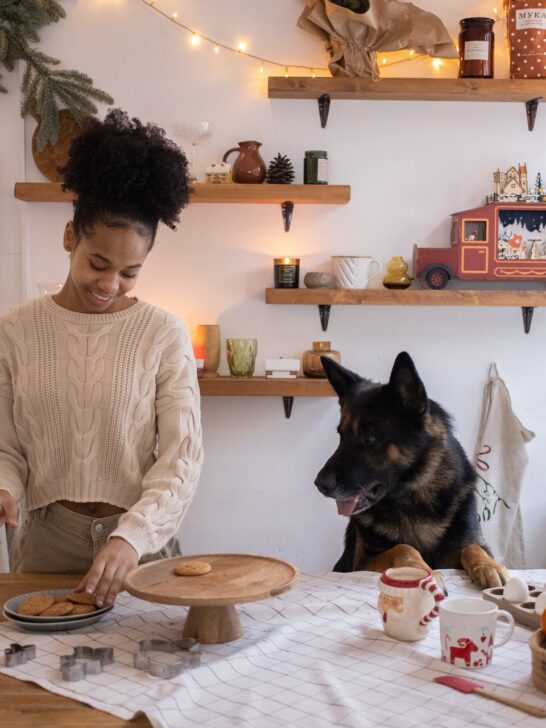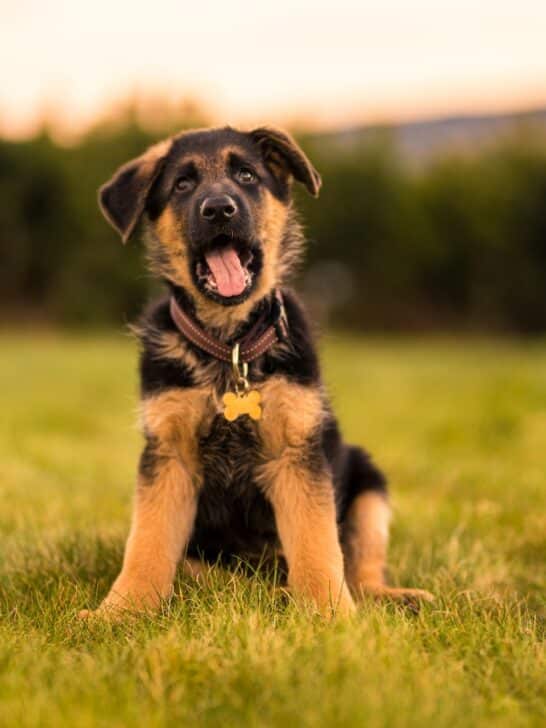The 9 Best German Shepherd Hip Pain Home Remedies
If you’re the proud owner of a German Shepherd, then we’re sure you’re already familiar with their affectionate and protective nature!
Known as being one of the most loving of all dog breeds, German Shepherds are highly affectionate towards their owners and family, which makes them the perfect family dog.
From their big loveable eyes to their love of playing, the addition of a German Shepherd into the household always comes with plenty of happiness and fun – not to mention them making awesome watchdogs, too!
Unfortunately, though, this breed of dog can be prone to something known as hip dysplasia, which is when the hip joints form abnormally when they’re puppies.
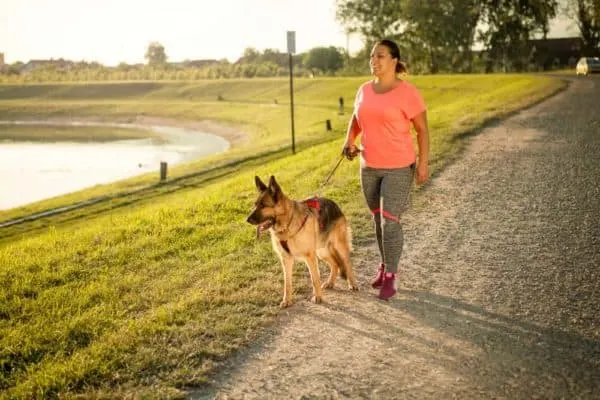
Alongside this common health condition, German Shepherds are also prone to developing hip pain (and other types of joint pain) along the course of their lives due to their size and strong muscles, which can often put pressure on their joints.
So, if you’re currently noticing that your German Shepherd is suffering from hip-related aches, then there are a variety of home remedies that you can use to help alleviate them.
Below, we’re going to be talking you through some of the best natural home remedies that are totally safe for you to use on your German Shepherd, as well as going into a little more detail about why German Shepherds are prone to hip-related concerns.
So, without further ado, let’s begin.
Why Do German Shepherds Suffer From Hip Pain?
Just hearing the words “hip dysplasia” is enough to send shivers down the spines of owners of large to giant breeds of dog, including those who own German Shepherds.
Unfortunately, this hereditary condition can dramatically impact the quality of a dog’s life, especially as it can be quite hard to prevent.
However, even though there is little an owner can do to totally prevent hip dysplasia from setting in, there are a variety of ways that owners can make sure that their dog’s quality of life is maintained, and that their comfort levels are optimal.
To break it down, hip dysplasia is a very common skeletal condition that can occur in a variety of dog breeds, although it is most commonly found in large to giant breeds of dogs.
Hip dysplasia can occur in smaller breeds of dogs, although these cases are very rare.
Continuing on, in healthy dogs, the hip joint is able to function as a ball and socket, with the two separate components working seamlessly together.
However, in dogs that suffer from hip dysplasia, the ball and socket are unable to fit correctly side by side, which means that instead of maintaining space between them, the ball and socket rub and grind each other down, which will ultimately result in gradual deterioration.
Additionally, many puppies are often fed food that is specially formulated for large breed puppies, which helps to prevent them from growing too much and potentially causing skeletal disorders such as hip dysplasia and elbow dysplasia to form.
Even though breeds such as the German Shepherd have a genetic predisposition to developing hip dysplasia, it is important to note that not all German Shepherds have this genetic condition.
Additionally, even in German Shepherds that do, not all of them will end up developing an extreme case of hip dysplasia, and the main reason for this comes down to the fact that many factors contribute to the onset of hip dysplasia.
These include nutrition and types of exercise, which means that many educated owners are able to keep the effects of hip dysplasia at bay for a very long time, while also ensuring that their German Shepherds are comfortable and still have a great quality of life when they do.
This brings us to our next section.
Best Home Remedies To Alleviate Hip Pain In German Shepherds
1. Make Sure That Your German Shepherd is Kept Warm:
Have you ever broken a bone?
If you have, then we’re sure you are already familiar with the aches and pains that can come along with the cold winter months, and believe it or not, plummeting cold temperatures can also affect the joints of your dog.
Though there’s no one scientific explanation that’s able to explain why cold temperatures can have this effect on the joints, one of the most probable theories is that a drop in temperature can cause tendons, muscles, and tissues to expand, which can then put pressure on the joints.
For this reason, in order to keep your German Shepherd as comfortable as can be, and to also prevent the chances of hip pain from setting in, you’ll need to make sure that you are keeping your dog warm all year long.
However, during the winter months, you should make sure to place extra cozy blankets in his bed area (such as this one):

You can also consider a padded mat for him to lay on if he likes to alternate between his bed and the floor. The SIWA MART Dog Bed Pad Mat is a great option to consider.

2. Keep Your German Shepherd Hydrated:
Besides being vital to the healthy functioning of dogs and contributing to shiny coats, water is also very effective at helping to prevent joint pain, as water helps to maintain the sponginess of cartilage.
Seeing as most German Shepherds like to drink little and often, it can be hard to know whether or not they are properly hydrated.
So, if you want to try and give your German Shepherd an extra burst of hydration, consider slipping moisture-rich foods into his bowls, such as cucumber and fresh carrots.
3. Schedule Weekly Massages:
If your German Shepherd is particularly susceptible to hip pain, then one way you can help to alleviate the achiness is by gently massaging the hips and surrounding areas.
Many owners like to give their dogs a massage while grooming them with a mitt (these are great), though you could just as easily use your hands while having a cuddle.

Before beginning the massage, first, make sure that your dog is relaxed and calm.
To avoid causing any extra pain, you should make sure that you are massaging the affected area using long, gliding strokes that aren’t applying too much pressure.
In the beginning, you might notice that your dog stiffens up, so start off nice and gentle before beginning to massage the main hip area.
As soon as your dog relaxes, you can then begin to apply a little more pressure and you gently work out the muscles.
While you are massaging your dog, pay attention to his body language and face. If he is squirming or visibly appears to be in pain, then you should immediately stop as you are massaging too hard.
The hip area is very sensitive, so make sure that you are being very soft and gentle, and look out for any visual cues that your dog is giving you.
When done correctly, a massage is very effective in helping to alleviate any pains in the hip area and is something that can be done either on a weekly or daily basis, depending on the severity of the pain.
4. Consider Taking Your Dog to Water Therapy:
Even though German Shepherds may encounter hip pain and other joint-related issues as they age, it doesn’t mean that they lose any of their energy!
German Shepherds are known for being young at heart and will keep their playful spirit throughout all of their lives.
One of the best ways that a German Shepherd can release pent-up aggression without causing any undue pressure on their hip joints is through swimming.
While swimming in the water, all the weight will be taken off the hip area, while allowing your German Shepherd to work out their muscles and get active.
More often than not, for German Shepherds suffering from hip dysplasia, most owners will take their dogs to a water rehabilitation clinic designed specifically for animals suffering from these types of joint issues.
However, if you have a pool or local swimming lake that is suitable for dogs, you could also choose to take your dog here.

5. Make Sure That You Cover Slippery Floors:
If your German Shepherd is struggling with hip dysplasia, then you should make sure that all surfaces that could potentially cause your German Shepherd to slip have been covered.
If you have hardwood flooring or similar, then we recommend laying down some rugs or runners which will allow your dog to safely walk over them without slipping or accidentally falling.
Even though slipping can sometimes be unavoidable, it is best to try and avoid it as much as you can.
Slipping can cause your German Shepherd’s hip dysplasia to become worse, and could even cause an increase in inflammation which could make it harder for your dog to feel comfortable.
Additionally, you could also consider buying your German Shepherds little booties to further reduce the chance of any accidental slipping in your home, as well as while on daily walks.
6. Incorporate Anti-Inflammatory Nutrients Into Your Dog’s Diet:
Besides moderate exercise and preventative measures, another way that you can help to alleviate the pain of your dog’s joints is by making slight changes to his diet.
For dogs that suffer from hip dysplasia, it’s always recommended to incorporate small quantities of foods that are high in anti-inflammatory properties or even CBD.
Safe foods that you can give your German Shepherd are papaya, very small amounts of ginger, and blueberries.
Though you can give blueberries to your dog as a snack, we recommend sprinkling small amounts of papaya and ginger onto your German Shepherd’s dinner, as this will avoid an upset stomach.
You could even choose to give your dog frozen blueberries.

7. Use Heating Pads:
An easy and simple way to help alleviate any aches and pains is to apply a heating pad to the affected area.
Heat has the ability to decrease inflammation and help to soothe joint pain and will help to improve the circulation surrounding your German Shepherd’s hip joints.
If you would like to use a heating pad to help soothe your German Shepherd’s hip pain, then you’ll need to make sure that you are using the heating pad on the very lowest setting.
Otherwise, you’ll run the risk of potentially burning your dog from the temperature being too high.
Additionally, before you apply it, make sure that your German Shepherd is relaxed and calm, otherwise, the heating pad may cause him to become spooked.
Once your dog is laying down in a comfortable position, you can then gently apply the heating pad onto the hip area of your german shepherd (depending on the size of the heating pad, you may need to use two).
Once you have applied the heating pad, you can then leave it to soothe and alleviate the hip pain.
As a side note, you should try not to allow the pad to sit on your dog’s skin for too long as this could become quite uncomfortable, so make sure that you only allow a maximum time frame of around 15 minutes.
During this time, make sure that you regularly check the pads every few minutes to make sure that there are no signs of overheating, and you should also make sure that you observe your dog for any signs of discomfort or pain.
If your dog displays any of these signs, you should remove them immediately.
Depending on the severity of your dog’s hip pain, you can choose to apply the heat pads every day.
However, even though you can use heat therapy on a daily basis, we do recommend that you take breaks of around 6-8 hours to prevent burning or overheating.
Additionally, if you don’t want to use a heating pad, then you could alternatively choose to use a large heating mat that will be big enough for your dog to lay on.
The Ubei Pet Heating Pad is a great choice to consider for those that want an alternative to heating pads.

 8. Make Sure That Your German Shepherd Gets Gentle Exercise:
8. Make Sure That Your German Shepherd Gets Gentle Exercise:
German Shepherds are known for their highly energetic natures, so you’ll need to make sure that you are still regularly taking your dog on regular walks.
Light to moderate exercise will help to keep your dog healthy and fit, while also helping to increase the overall health of his joints.
If your German Shepherd is suffering from joint pain, then we recommend that you opt for frequent and short walks that you can take your dog on each day, as opposed to longer walks.
These shorter bursts of activity will help to keep your dog healthy, while also ensuring that their joints aren’t being overworked, or that too much pressure is being put on them.
You should also aim to walk your German Shepherd on softer grounds, such as grass, as your German Shepherd will be more comfortable.
The grass isn’t as slippery as other types of floor (such as concrete) even after it has rained, and it is also a lot more soft and “cushiony” to walk across, which will help to prevent any excess pressure from being placed on the joints.
Additionally, we also recommend that you limit your walks to around 15 minutes, as anything longer may put too much pressure on your German Shepherd’s hips.
During each walk, you should also allow your German Shepherd to go at his own pace, and remember not to push him to walk any faster than is comfortable.
9. Ease Pain With Turmeric Powder:
Alongside nutritional foods that can help to reduce inflammation, turmeric powder has also shown positive effects on reducing inflammation.
So much so, that in recent years, turmeric has begun to be officially sold as a holistic treatment for helping to alleviate joint pain (including the hips) in dogs.
Many dogs do not like the taste of Turmeric (especially when sprinkled over their delicious dinner) so many owners choose to get around this by feeding their German Shepherds turmeric supplement pills.
If you need a recommendation, we suggest checking out the Coco and Luna Store Turmeric for Dogs.
These chewable tablets taste similar to dog treats and can be mixed into food or given alone to help alleviate joint pain.


























